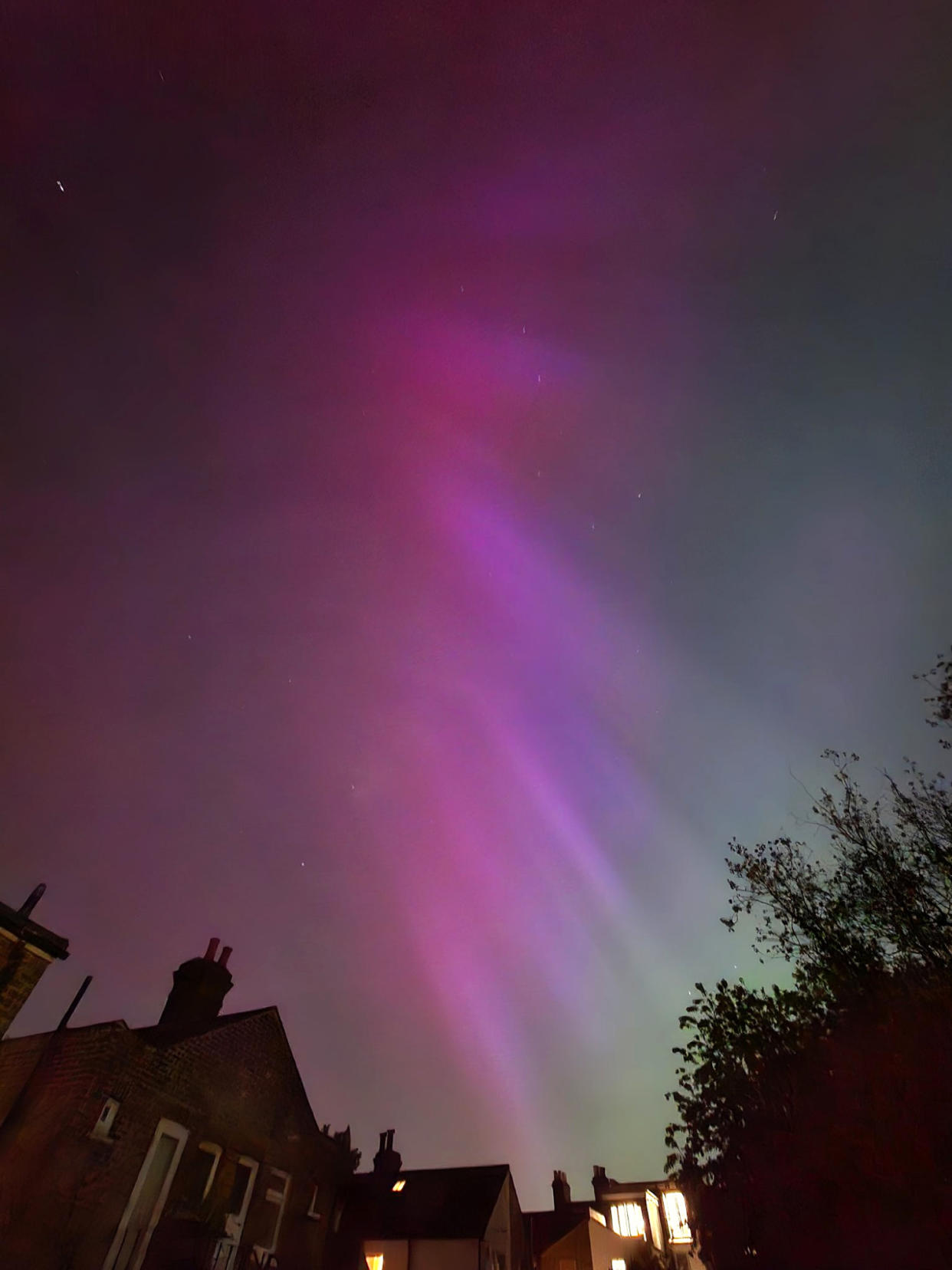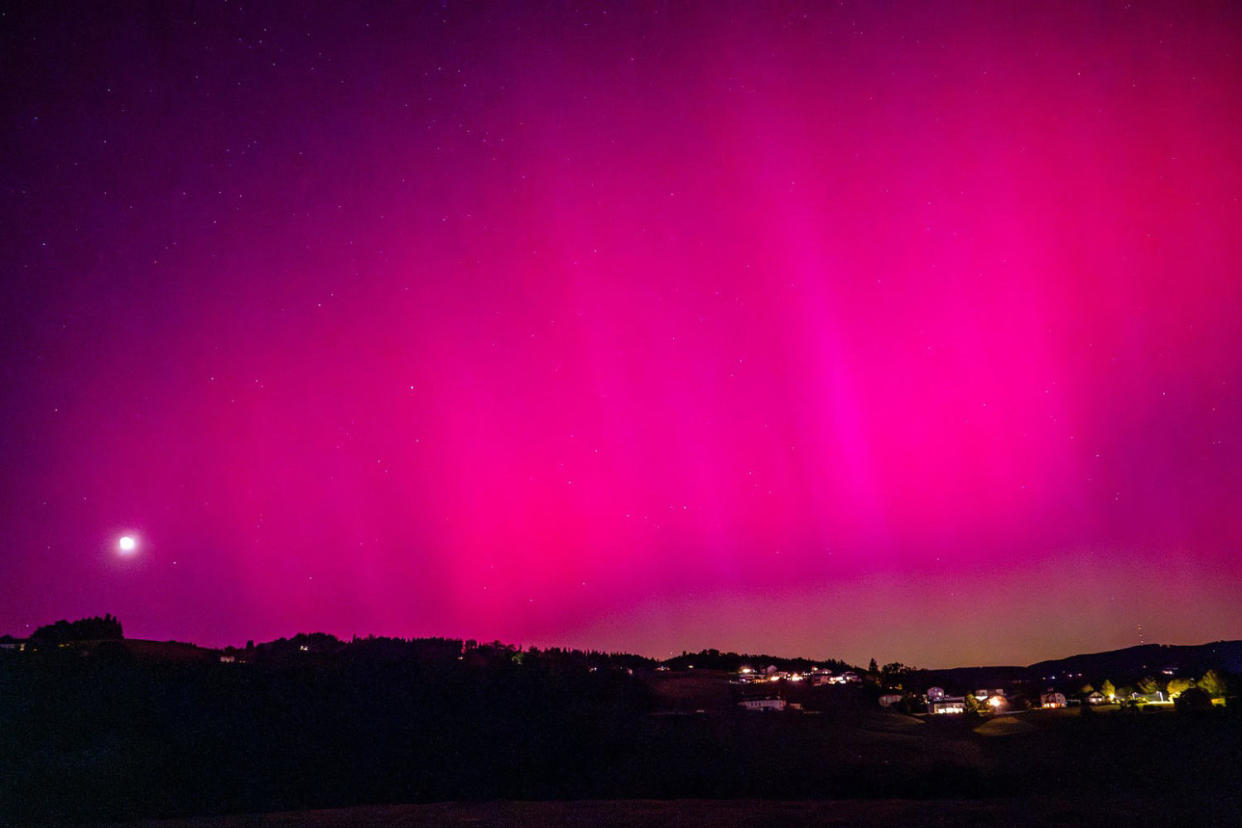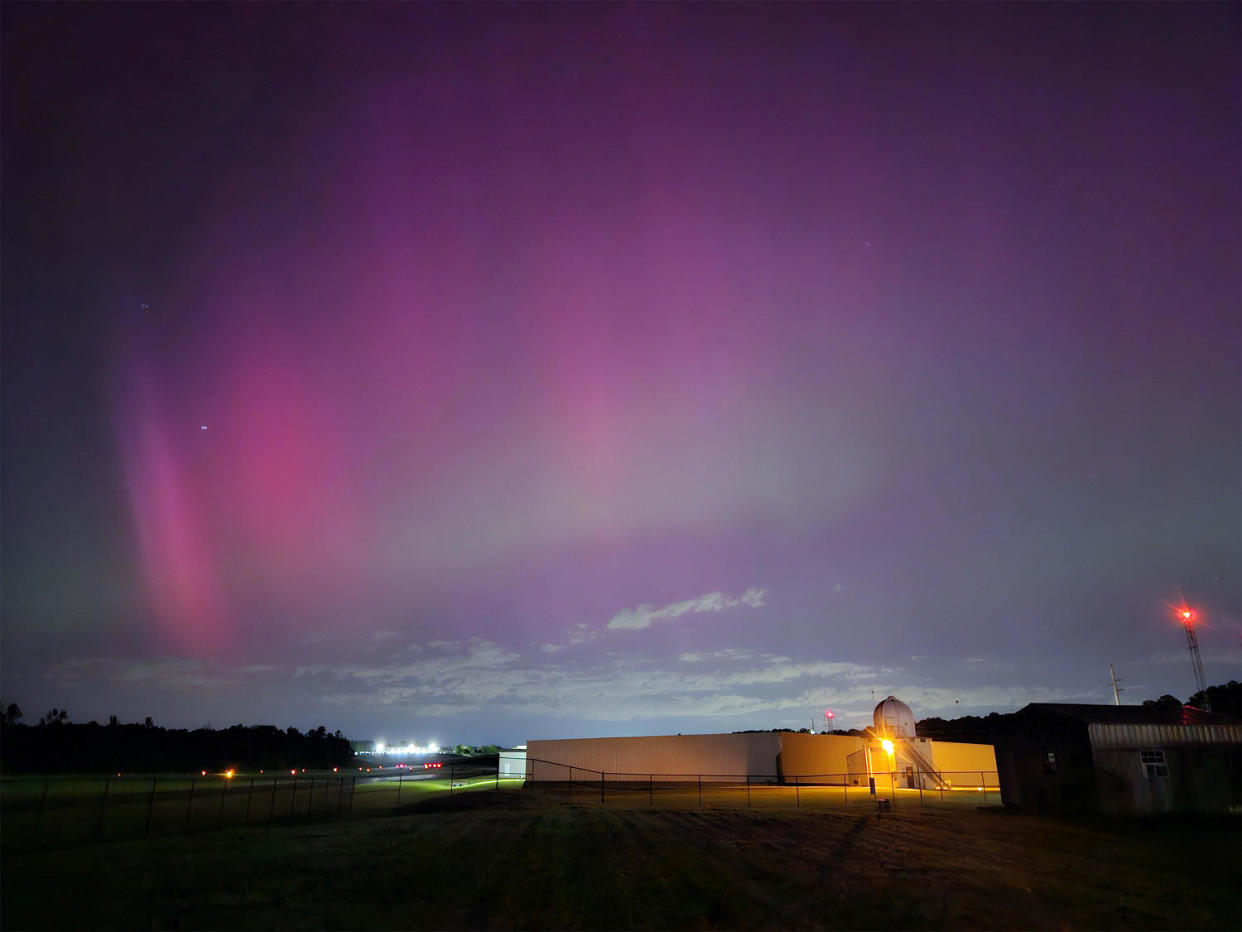Auroras illuminate night skies around the world, expected to possibly continue through Monday
Night skies were lit up by the northern lights Friday in locations the auroras don't normally shine as a severe solar storm supercharged the phenomenon.
Photos taken from all over the world showed bright-colored skies lit up in hot pink, green and purple across Europe, in the United States and as far as New Zealand.
Friday’s storm was the first severe geomagnetic storm watch the agency had issued since 2005. Early on Saturday, the storm delivered, reaching intensity G5 on a 1-5 scale, making it the strongest storm to reach Earth’s atmosphere since October 2003’s “Halloween Storms,” said Bryan Brasher, National Oceanic and Atmospheric Administration’s Space Weather Prediction Center spokesperson.
The center said activity with G4 to G5 intensity was likely to reach Earth again on Sunday.
Due to continued solar flares and eruptions from the sun, the National Oceanic and Atmospheric Administration’s Space Weather Prediction Center said in a series of statements that the flares could trigger severe geomagnetic storms and "spectacular displays of aurora," possibly through Monday and beyond.
The geomagnetic field is expected to reach “severe storm levels” on Sunday, “active to severe storm levels” on Monday, and “unsettled to minor storm levels” on Tuesday, according to a center forecast released Saturday.
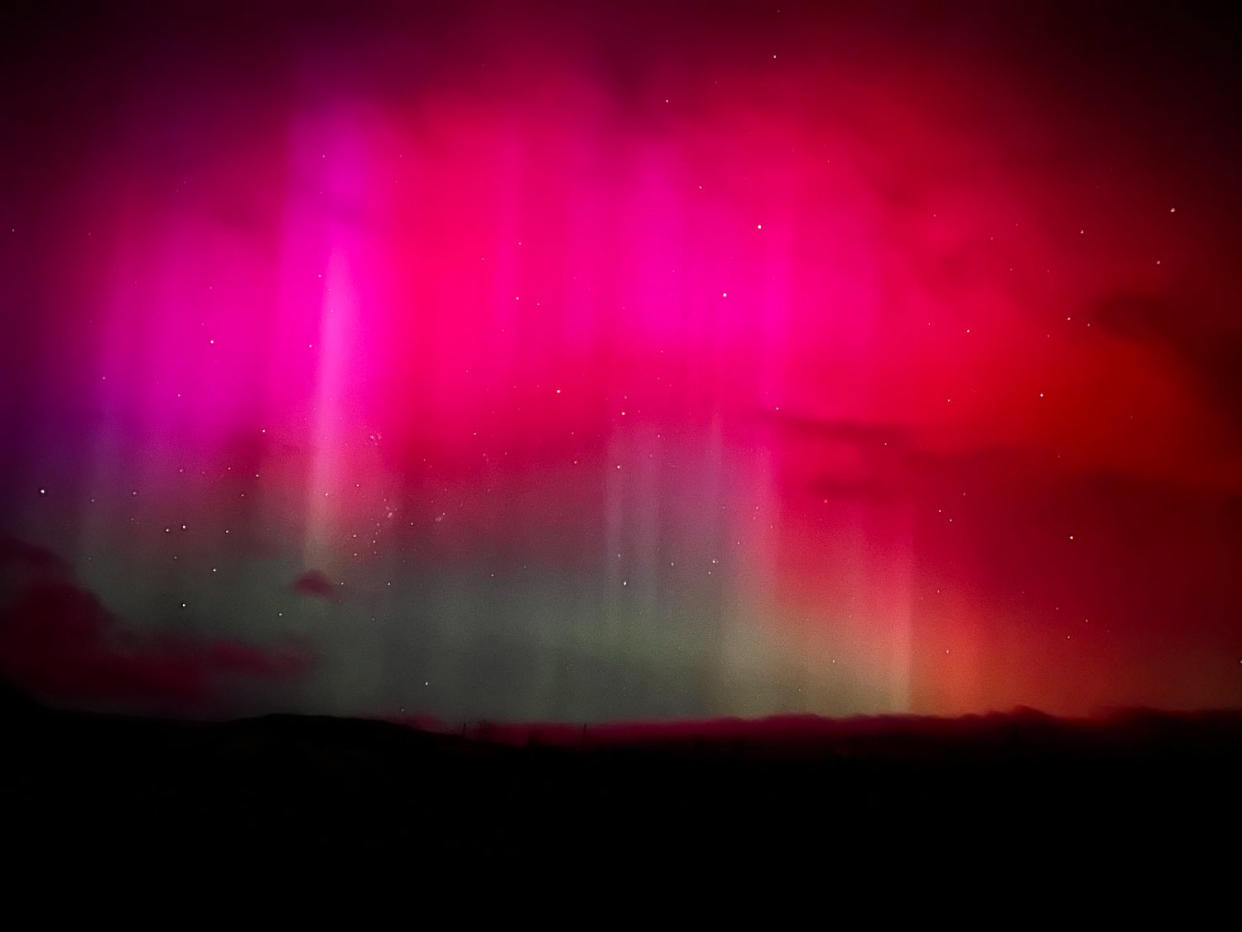
Brasher said geomagnetic storm activity was expected to continue. With the planet absorbing its impacts on a delayed timeframe, the visual effects could possibly stick around through Tuesday, he said.
“The region of the sun that’s the source of this weather has continued to be active,” Brasher said. “There is a chance for new events to occur based on that.”
The northern lights appear in the sky when charged particles spew from the sun during solar storms, making colorful light displays when clouds of those particles collide with Earth's magnetic field and interact with the atoms and molecules in Earth's upper atmosphere.
Typically, the northern lights are only seen in high latitudes, but during intense solar storms, like on Friday, they can be seen farther south than expected, with reports of sightings in Louisiana, Alabama, and Mississippi.
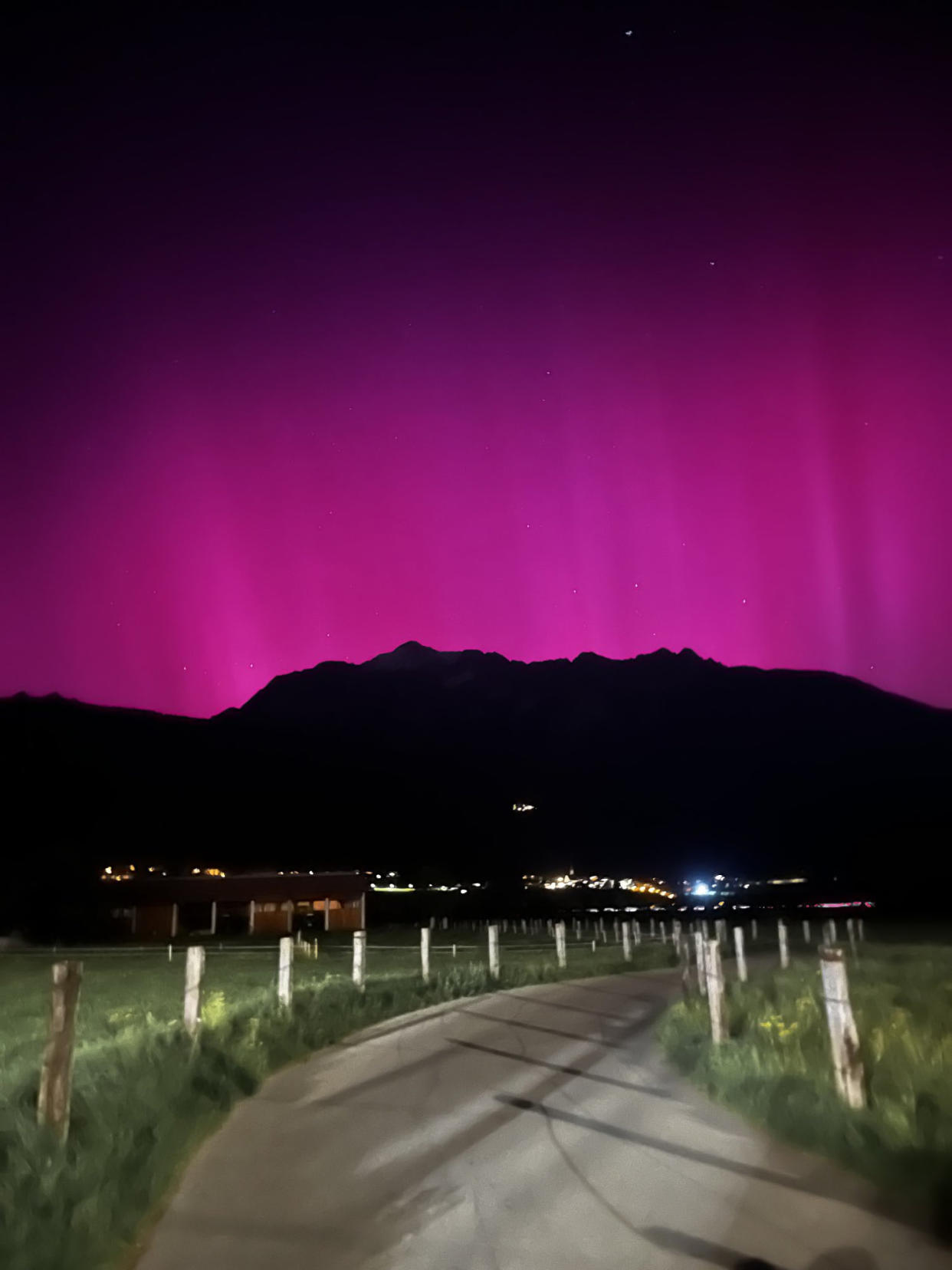
The cosmic show will likely follow this geomagnetic activity, according to the NOAA, which said that the ongoing storm has caused some reports of power grid issues.
NASA said Saturday that it had detected another sizable solar flare.
On social media, people posted pictures from a wide variety of locations around the world.
